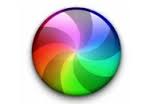People are getting into
Mac world, quitting Windows, aiming for a high-speed machine that
suites the needs of today’s digital world. The applications a user
run can be of small as well as of large sizes, which require a set of
resources of the machine. These resources include RAM to execute,
Processor to process the execution, and large amount of memory for
storage. Though Mac machines are in favour of such activities with
their amazing quality hardware, users have always been reporting Mac
performance issues, such as slow running Mac. When people get annoyed
with their slow Mac, it is obviously time for them to search for a
good Mac disk cleaner to improve Mac performance.
Causes of Mac slow down
People start uninstalling
applications when they find their machine is running slower as
compared to when there was only a few of them installed. It can be
one of the causes for why a Mac slows down, but is not enough to
speed it up. Let us go through a few activities that damage Mac
health.
Unwanted Applications
People install so many
applications on their Mac for different purposes. It is not like that
an app utilizes system resources only if you run it, but eats up less
or more RAM and processor every time the system is run. Therefore, it
is in favor of the user as well as of your Mac to install the
application that is to be used, but not those which would probably be
used in future.
Overfilled Desktop
Desktop is the very first
screen that executes when your Mac is turned on. Installing a slew of
applications, saving data and placing docks on the desktop minimizes
Mac performance, thereby eating up the RAM and processor. Try to
minimize such items on the desktop to get a faster and better
startup.
Temporary Files
System programs create
several files when some data and applications are processed. These
files may contain intermediate calculations or other binary
transactions. After the process is complete, these files are useless;
however, utilize much of the machine resources. Removal of such files
does not affect internal system resources, but enhance Mac
performance.
Cookies and Junk Files
Cookies are temporary
internet files, which automatically get downloaded whenever a user
goes online. Just like temporary system files, cookies also eat up
RAM and processor, keeping them busy. Users meet a spinning beach
ball, which, sometimes, sinks in a loop that does not end.
Browser History
Web and file browsers
store the history i.e. log of their relative activities performed by
the user. In addition, browser plug-ins and other add-ins eat up RAM
and processor in fragments and result in slower browser response
while opening and displaying web pages.
Mac disk cleaner
thoroughly scans every installed application, log, transaction report
etc. and allows the user to remove all unwanted items, such as
temporary files, cookies and junk files. It frees up the hard drive
memory, speeds up operating system, and even facilitates quick app
uninstall by a simple drag and drop.


